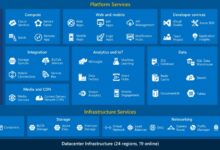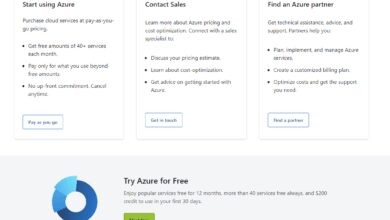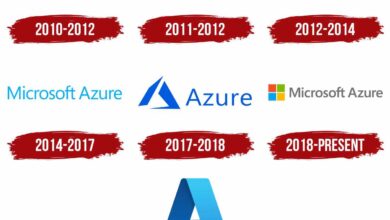Azure Price Cal: 7 Powerful Tips to Master Cloud Cost Management
Managing cloud expenses doesn’t have to be overwhelming. With the right tools, like the Azure price cal, you can gain full control over your Microsoft Azure spending—saving time, reducing waste, and boosting ROI.
Understanding the Azure Price Cal and Its Importance

The Azure price cal is more than just a calculator—it’s a strategic tool for businesses leveraging Microsoft Azure. Whether you’re a startup or an enterprise, understanding your cloud costs upfront is critical to budgeting, forecasting, and avoiding surprise bills.
What Is the Azure Price Cal?
The Azure price cal, officially known as the Azure Pricing Calculator, is a free online tool provided by Microsoft. It allows users to estimate the monthly cost of Azure services before deployment. You can select virtual machines, storage, networking, databases, AI tools, and more, customizing configurations to match your project needs.
- It supports pay-as-you-go, reserved instances, and hybrid use pricing models.
- Users can compare different service combinations to find the most cost-effective setup.
- The tool integrates real-time pricing data, ensuring accuracy across global regions.
This makes the Azure price cal an essential first step in any cloud migration or expansion strategy.
Why Accurate Cost Estimation Matters
Without precise forecasting, organizations risk overspending by 30% or more on cloud resources. According to a Gartner report, global public cloud spending will exceed $679 billion by 2024. Much of this expenditure could be optimized with better planning tools like the Azure price cal.
“The biggest challenge in cloud adoption isn’t technology—it’s cost predictability.” — Cloud Economics Expert, 2023
By using the Azure price cal early in the planning phase, teams can avoid over-provisioning, identify cheaper alternatives, and align technical decisions with financial goals.
How to Use the Azure Price Cal Step by Step
Getting started with the Azure price cal is straightforward, but mastering it requires attention to detail. Let’s walk through the process from account creation to exporting your final estimate.
Step 1: Accessing the Azure Pricing Calculator
Visit https://azure.microsoft.com/en-us/pricing/calculator/ and sign in with your Microsoft account. No Azure subscription is required to use the calculator, making it accessible to anyone, including consultants and developers evaluating options.
- The interface is intuitive, featuring a search bar, category filters, and a clean layout.
- You can start building your estimate immediately without logging in, though saving requires authentication.
This ease of access ensures that stakeholders across departments—from finance to DevOps—can collaborate on cost modeling.
Step 2: Adding Services to Your Estimate
Begin by searching for specific Azure services or browsing categories such as Compute, Storage, Networking, Databases, AI + Machine Learning, and Developer Tools. For example, if you’re deploying a web application, you might add:
- Azure Virtual Machines (e.g., B2s or D4s_v3)
- Azure Blob Storage for media files
- Azure SQL Database for backend data
- Azure Application Gateway for traffic management
- Azure Monitor for performance tracking
Each service added appears in the summary panel, where you can adjust instance count, usage hours, and configuration details.
Step 3: Customizing Regional and Pricing Options
One of the most powerful features of the Azure price cal is regional pricing comparison. Cloud costs vary significantly between regions due to data center availability, taxes, and local demand.
For instance, running a D4s_v3 VM in East US may cost $0.192/hour, while the same VM in North Europe could cost $0.208/hour. The Azure price cal lets you toggle between regions instantly to see these differences.
- Select your preferred region under each service’s settings.
- Choose between pay-as-you-go, reserved instances (1 or 3 years), or spot instances for temporary workloads.
- Enable hybrid benefit if you have existing Windows Server or SQL Server licenses.
These options can reduce costs by up to 72%, especially when combining reserved instances with Azure Hybrid Benefit.
Key Features That Make the Azure Price Cal Stand Out
What sets the Azure price cal apart from generic cost estimators? It’s not just about adding up prices—it’s about providing actionable insights tailored to real-world deployments.
Real-Time Pricing Updates
Microsoft updates the Azure price cal in real time whenever there are changes to service pricing, discounts, or new offerings. This ensures that your estimates reflect current market conditions, unlike static spreadsheets or outdated third-party tools.
For example, when Azure introduced lower-cost B-series burstable VMs, the calculator immediately included them with usage-based cost projections based on CPU credits.
“Outdated pricing models lead to inaccurate forecasts. Real-time data is non-negotiable in cloud economics.” — TechTarget, 2023
Integration with Azure Cost Management
Once your resources are live, the Azure price cal connects seamlessly with Azure Cost Management + Billing. You can compare your initial estimate from the Azure price cal with actual spending, identifying variances and optimizing accordingly.
- Set budgets and alerts based on your calculated estimates.
- Track reserved instance utilization and savings.
- Generate reports for stakeholders showing forecast vs. actual spend.
This closed-loop system turns the Azure price cal from a planning tool into a continuous optimization engine.
Export and Share Capabilities
After finalizing your estimate, you can export it as a CSV or PDF file. This is invaluable for sharing with finance teams, clients, or executives who need transparent breakdowns of projected costs.
The exported file includes:
- Detailed line items for each service
- Monthly and annual cost projections
- Configuration specifics (region, instance type, storage size)
- Discounts applied (e.g., reserved instances, hybrid benefit)
This transparency builds trust and supports informed decision-making across departments.
Common Mistakes When Using the Azure Price Cal
Even experienced cloud architects can misstep when using the Azure price cal. Avoiding these common errors ensures your estimates are reliable and actionable.
Overlooking Egress and Data Transfer Costs
One of the most frequent oversights is ignoring data egress fees. While inbound data is free on Azure, outbound data (especially to the internet or cross-region transfers) incurs charges.
For example, transferring 10 TB of data from East US to a user in Asia might cost $1,200/month. If you’re hosting a content-heavy website or running frequent backups offsite, these costs add up fast.
The Azure price cal includes a Data Transfer section under Networking, but many users skip it. Always input expected egress volumes to get a complete picture.
Underestimating Managed Service Overheads
Managed services like Azure Kubernetes Service (AKS), Azure App Service, or Azure Functions come with convenience—but also hidden costs. While the base service might seem cheap, additional components like load balancers, monitoring, and autoscaling can increase the bill.
For instance, AKS itself is free, but the underlying VMs, storage, and networking aren’t. Users often forget to include these in their Azure price cal estimates, leading to under-budgeting by 40% or more.
“The ‘free’ service trap is real. Always model the full stack, not just the headline feature.” — Cloud Architect, Microsoft MVP
Failing to Account for Growth and Scalability
Many estimates are built for Day 1 deployment but don’t project future growth. A web app serving 1,000 users today might scale to 100,000 in six months. If your Azure price cal model doesn’t account for this, you’ll face budget shocks later.
Solution: Create multiple scenarios in the Azure price cal:
- Baseline (current needs)
- Growth (2x–5x traffic)
- Premium (high availability, disaster recovery)
This scenario-based approach helps secure funding for future scaling and demonstrates foresight to leadership.
Advanced Strategies for Optimizing Costs with the Azure Price Cal
Once you’ve mastered the basics, it’s time to leverage the Azure price cal for advanced cost optimization. These strategies go beyond estimation—they enable proactive financial governance.
Leveraging Reserved Instances and Savings Plans
The Azure price cal allows you to model the impact of Reserved Virtual Machine Instances (RIs) and Compute Savings Plans. By committing to 1- or 3-year terms, you can save up to 72% compared to pay-as-you-go pricing.
In the calculator, simply toggle the pricing model for any VM from “Pay as you go” to “1-year” or “3-year reserved.” The tool instantly shows your monthly savings and total commitment cost.
- Best for: Stable, predictable workloads (e.g., databases, domain controllers)
- Not ideal for: Experimental, short-term, or highly variable workloads
- Tip: Use the Azure price cal to compare RI savings across regions before purchasing.
Microsoft also offers Savings Plans, which provide flexible compute credits across services. The Azure price cal supports modeling these too.
Using Hybrid Benefit to Reduce Licensing Costs
If your organization owns Windows Server or SQL Server licenses with Software Assurance, you can apply Azure Hybrid Benefit (AHB) to reduce costs by up to 40%.
In the Azure price cal, when selecting a Windows VM or SQL Database, you’ll see an option to enable AHB. Enabling it recalculates the price, removing the OS licensing fee and charging only for the underlying infrastructure.
Example: A Standard_D4s_v3 VM with Windows normally costs $0.192/hour. With AHB, it drops to $0.112/hour—a 41.7% reduction.
“Azure Hybrid Benefit is one of the most underutilized cost-saving features in enterprise cloud adoption.” — Microsoft Cost Optimization Guide, 2023
Always check license eligibility before modeling, but when applicable, AHB can dramatically improve ROI.
Modeling Multi-Region and Disaster Recovery Setups
For mission-critical applications, high availability requires multi-region deployments. The Azure price cal lets you model active-passive or active-active architectures across regions.
For example, you can:
- Deploy primary VMs in East US
- Add secondary VMs in West US for failover
- Include Azure Traffic Manager for DNS-based routing
- Add Azure Site Recovery for automated replication
The calculator aggregates costs across all regions, giving you a total picture of your DR investment. This helps justify spend to compliance officers or auditors requiring redundancy.
Comparing Azure Price Cal with Competitor Tools
While Microsoft’s tool is robust, how does it stack up against alternatives from AWS and Google Cloud? Let’s compare key aspects to understand where the Azure price cal excels—and where it falls short.
Azure vs. AWS Pricing Calculator
The AWS Pricing Calculator (now part of AWS Total Cost of Ownership Tool) is similarly detailed but has a steeper learning curve. AWS breaks down costs into granular components (e.g., EC2 instance types, EBS volumes, VPC endpoints), which can overwhelm beginners.
In contrast, the Azure price cal offers a cleaner UI and better integration with Microsoft’s ecosystem (e.g., Office 365, Dynamics 365). It also provides clearer guidance on hybrid scenarios, thanks to Azure’s strong on-premises integration.
- Winner for simplicity: Azure price cal
- Winner for granularity: AWS Calculator
- Best for hybrid: Azure price cal
Azure vs. Google Cloud Pricing Calculator
Google Cloud’s pricing calculator is visually appealing and supports real-time adjustments. However, it lacks some advanced features like detailed reserved instance comparisons and hybrid benefit modeling.
Google’s sustained use discounts are automatically applied in billing but not always reflected accurately in the calculator, leading to potential underestimation.
The Azure price cal, by comparison, is more transparent about discounts and commitments, making it better suited for enterprise financial planning.
“Google’s tool feels modern but lacks depth. Azure’s is comprehensive and enterprise-ready.” — Cloud Comparison Review, 2023
Third-Party Alternatives and When to Use Them
Beyond vendor tools, platforms like CloudHealth by VMware, Datadog Cloud Cost Management, and Apptio offer advanced analytics, AI-driven recommendations, and cross-cloud visibility.
These are ideal for:
- Multi-cloud environments (AWS + Azure + GCP)
- Large enterprises with complex cost allocation needs
- Organizations requiring chargeback/showback reporting
However, for most Azure-only users, the built-in Azure price cal remains the fastest, most accurate starting point.
Real-World Use Cases of the Azure Price Cal
Theoretical knowledge is valuable, but seeing how the Azure price cal performs in real scenarios brings its power to life. Here are three practical examples from different industries.
Startup Launching a SaaS Platform
A fintech startup plans to launch a SaaS app using Azure App Service, Azure SQL Database, and Azure Blob Storage. Using the Azure price cal, they model:
- App Service Plan: B1 (Basic) at $52.90/month
- SQL Database: 50 DTUs at $150/month
- Blob Storage: 500 GB at $12.50/month
- Data Transfer: 2 TB egress at $160/month
Total estimated cost: ~$375/month. With this data, they secure seed funding and optimize early by choosing reserved instances for SQL Database, cutting costs by 35%.
Enterprise Migrating On-Premises Workloads
A global manufacturer migrates 50 VMs from on-premises to Azure. They use the Azure price cal to compare:
- Pay-as-you-go vs. 3-year reserved instances
- Standard vs. Premium SSD storage
- Regional options (East US vs. Germany West Central)
Result: By opting for reserved instances and enabling Azure Hybrid Benefit, they reduce projected annual costs from $420,000 to $210,000—a 50% savings.
Educational Institution Deploying AI Labs
A university deploys AI labs using Azure Machine Learning and GPU-powered VMs (NC6s_v3). The Azure price cal helps them estimate:
- GPU VM cost: $0.90/hour (spot instances reduce to $0.30)
- Azure ML workspace: $100/month
- Data storage and processing: $200/month
By modeling spot instances and scheduling lab hours, they cut costs by 65% while maintaining performance.
Future Trends and Updates to the Azure Price Cal
As cloud computing evolves, so does the Azure price cal. Microsoft continuously enhances the tool to meet emerging demands in AI, sustainability, and financial governance.
AI-Powered Cost Recommendations
Rumors suggest Microsoft is integrating AI into the Azure price cal to offer intelligent recommendations. Imagine typing “I need a web app for 10K users” and getting an optimized architecture with cost breakdowns.
This would reduce manual input errors and accelerate planning, especially for non-technical stakeholders.
Sustainability and Carbon Footprint Tracking
In line with Microsoft’s carbon-negative goals, future versions of the Azure price cal may include environmental impact metrics. Users could see not just cost, but also estimated CO2 emissions per configuration.
This would help organizations meet ESG (Environmental, Social, and Governance) targets while optimizing spend.
“The next frontier in cloud cost management isn’t just dollars—it’s decarbonization.” — Microsoft Sustainability Report, 2023
Enhanced Multi-Cloud and Edge Support
With Azure Arc and Azure Stack expanding hybrid capabilities, the Azure price cal may soon support edge computing and multi-cloud cost modeling. This would allow users to estimate costs for on-premises, edge, and cloud resources in a single interface.
Such a feature would position the Azure price cal as a unified financial planning hub for distributed infrastructures.
What is the Azure price cal?
The Azure price cal is Microsoft’s official online tool for estimating the cost of Azure services before deployment. It allows users to configure virtual machines, storage, networking, and other resources to generate accurate monthly cost projections.
Is the Azure price cal free to use?
Yes, the Azure price cal is completely free and accessible to everyone at https://azure.microsoft.com/en-us/pricing/calculator/. No Azure subscription is required to create estimates.
Can I save and share my estimates?
Yes, after signing in with a Microsoft account, you can save your estimates to the cloud and export them as PDF or CSV files for sharing with teams or clients.
Does the Azure price cal include data transfer costs?
Yes, the Azure price cal includes a dedicated section for data transfer (egress) costs under Networking. It’s crucial to input expected outbound data volumes to avoid underestimating total costs.
How accurate is the Azure price cal?
The Azure price cal uses real-time pricing data from Microsoft and is highly accurate for standard configurations. However, actual costs may vary slightly due to usage spikes, support plans, or unmodeled services.
Mastering the Azure price cal is a game-changer for any organization using Microsoft Azure. From startups to enterprises, this tool empowers teams to forecast costs accurately, optimize spending, and align technical decisions with business goals. By avoiding common pitfalls, leveraging advanced features like reserved instances and hybrid benefit, and planning for scalability, you can turn cloud cost management from a challenge into a strategic advantage. As Microsoft continues to enhance the Azure price cal with AI, sustainability metrics, and multi-cloud support, its role as a cornerstone of cloud financial operations will only grow stronger.
Further Reading:









